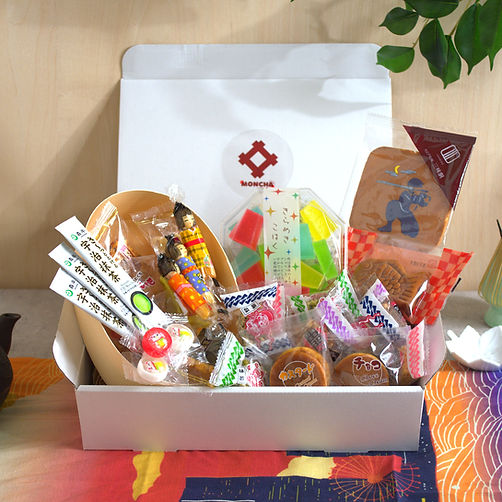- 宏史 豊島
- Sep 24
- 2 min read

As its name suggests, Shamido is a traditional Japanese kawara-senbei (tile-shaped cookie) modeled after the body of the shamisen, Japan’s three-stringed musical instrument.
The shamisen was born about 400 years ago in the Edo period and quickly became an essential part of stage arts such as kabuki and bunraku (puppet theater). Its bold yet delicate sound made it one of the most iconic instruments in Japan’s musical culture. Inspired by this elegant instrument, the sweet known as Shamido was created.
Interestingly, this isn’t a widely known Asakusa souvenir. In fact, Samurai Moncha stumbled upon it by chance while exploring the streets of Asakusa.
First Impressions and Taste
At first glance, Shamido looks like a simple cookie. But take one bite and your impression changes completely.
The dough, made with plenty of eggs, is crisp and airy, offering a light crunch with each bite. A gentle sweetness spreads across the palate—refined, never overwhelming, and somehow nostalgic.
What makes Shamido truly special is the artistry on each piece. Flowers, birds, and seasonal landscapes are delicately printed on the surface, making each cookie feel like a miniature canvas. Opening a box is like unwrapping a surprise: “What design will I get today?” It’s no wonder Shamido is loved not only as a sweet to eat but also as a delightful treat to admire. Perfect for gifts or celebrations, it brings joy in more ways than one.

The Craftsmanship Behind Shamido
Shamido is produced by Matsuzaki Senbei, a long-established confectioner in Tokyo with a history that stretches back to the Edo period. Known for preserving tradition while embracing innovation, the brand has become synonymous with quality and artistry.
The intricate designs on Shamido are created using silk-screen printing techniques. Each piece is carefully decorated, showcasing fine details and vibrant patterns. Though technically a confection, Shamido carries the beauty of Japanese craftsmanship—blurring the line between sweets and art.
Eating it feels like enjoying culture and artistry through a single bite, a truly luxurious experience.

Modern Popularity and Ways to Enjoy
Today, Shamido can be found in Asakusa and in the wagashi sections of department stores. It’s not a flashy souvenir that dominates tourist shops; rather, it’s a hidden gem appreciated by those “in the know.” Many who try it once become repeat customers.
Recently, younger generations have also rediscovered Shamido, sharing its art-like designs on Instagram. Its aesthetic appeal makes it a perfect fit for social media, and its quiet popularity is steadily growing.
Beyond traditional tea pairings like matcha and sencha, Shamido pairs beautifully with coffee or black tea. Many people enjoy it as a way to blend Japanese tradition into a Western-style teatime, showing how seamlessly this classic treat fits into modern lifestyles.

In Summary
Shamido is more than just a cookie. It’s a refined wagashi that captures Japan’s musical heritage, embodies the delicate skill of artisans, and reflects the nation’s appreciation of seasonal beauty. With its crisp texture, gentle egg-based sweetness, and artful designs, Shamido offers a uniquely Japanese experience in every bite.
In the Moncha BOX, Shamido is presented alongside other traditional Japanese sweets and matcha. From a single cookie, you can savor the history, craftsmanship, and aesthetic spirit of Japan.





Comments